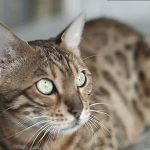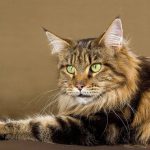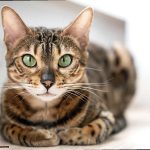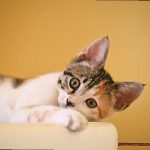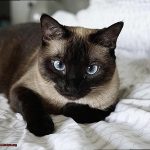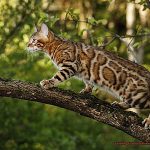Are you tired of dealing with the mess and hassle of traditional cat litter? Have you considered switching to a different type of litter, like pine pellets? Pine pellet litter is becoming increasingly popular among cat owners due to its eco-friendliness and affordability. But, before you make the switch, there’s one question that needs answering: does pine pellet litter clump?
The answer is simple – no. Unlike clay or clumping litter, pine pellet litter does not clump. However, don’t let that discourage you from giving it a try. Pine pellet litter has many benefits over traditional options.
Not only is it more environmentally friendly as it’s made from compressed sawdust and doesn’t contain harmful chemicals, but it also has natural odor control properties. Plus, it’s incredibly absorbent, so it can last longer than other types of litter.
You may be wondering how pine pellet litter works without clumping. It all comes down to the science of the litter. When the pellets come into contact with moisture, they break down into sawdust which absorbs liquid and odor. Unlike other litters, there’s no need to scoop out clumps – simply sift out the sawdust and replace it with fresh pellets as needed.
So if you’re looking for a natural and hassle-free option for your feline friend, give pine pellet litter a try. With its unique properties and benefits over traditional options, you won’t regret making the switch.
Advantages of Pine Pellet Litter
Pine pellet litter may be the answer to all your problems. Not only is it biodegradable and renewable, but it also effectively locks in moisture and odors. Here are some of the other advantages of using this litter:
- Cost-effective: Pine pellet litter is relatively inexpensive, making it a great choice for cat owners who want to save money without compromising on quality.
- Easy to use: With pine pellet litter, all you need to do is pour the pellets into the litter box and let your cat do its business. The pellets will break down into sawdust upon contact with moisture, making it simple to scoop out.
- Low tracking: Unlike traditional clay litters that stick to your cat’s paws and end up all over your house, pine pellet litter doesn’t track as much. This means less mess for you to clean up.
- Natural scent: Pine pellet litter has a natural pine scent that can help mask any unpleasant odors in your cat’s litter box. This keeps your home smelling fresh and clean without the need for artificial fragrances.
- Safe for cats: Pine pellet litter is made from natural materials, which means that it is safe for cats to use. It doesn’t contain any harmful chemicals or additives that could harm your pet’s health.

Disadvantages of Pine Pellet Litter
This eco-friendly and natural option is made from compressed sawdust and contains no chemical additives or fragrances. While pine pellet litter has its benefits, it’s important to be aware of the potential disadvantages before making the switch.
First and foremost, pine pellet litter doesn’t clump like traditional clay-based litter. This means it can be more difficult to clean and maintain, as wet sawdust can stick to the bottom of the litter box and be harder to scoop out. If you’re used to the convenience of clumping litter, this may be a major downside for you.
Odor control is another potential issue with pine pellet litter. While some brands include natural odor-fighting ingredients, they may not be as effective as chemical additives found in typical clay litters. This could lead to unpleasant smells lingering around your home.
Additionally, some cats may not take kindly to the texture or smell of pine pellet litter. It has a coarser texture than clay litter and may feel uncomfortable on sensitive paws. The natural pine scent may also be too strong or unpleasant for some felines.
Cost is another factor to consider when switching to pine pellet litter. While prices can vary depending on the brand and where you purchase it, pine pellet litter can cost more per pound than traditional clay litters.
Does Pine Pellet Litter Clump?
You may be wondering if pine pellet litter clumps like its clay counterparts. As an expert on the subject, let me give you the lowdown.
First things first: pine pellet litter does not clump like clay litters do. When it comes into contact with moisture, it absorbs it and breaks down into tiny sawdust-like particles. While this can create a bit of a mess in the litter box, it also makes scooping and disposing of the litter easier.
So why doesn’t pine pellet litter clump? It’s simply because it’s made from different materials than clay litters. Clay litters contain sodium bentonite, which swells and forms tight clumps when it gets wet. Pine pellet litter, on the other hand, is made from compressed sawdust and doesn’t contain any clumping agents.
While pine pellet litter may not clump, it still has some advantages over traditional clay litters. For one, it’s made from renewable resources and is biodegradable, making it an environmentally friendly choice for cat owners. Additionally, many cats seem to prefer the natural scent of pine over the perfumes and fragrances often found in other litters.
However, it’s important to keep in mind that pine pellet litter may not be the best fit for all cats. Some cats may be allergic to pine or dislike the texture of the litter. And because it doesn’t form tight clumps, it may require more frequent scooping than traditional clay litters.
The Pros and Cons of Clumping Litters
Let’s start with the positives – clumping litters can be a game-changer in terms of convenience. Made with bentonite clay, they form rock-solid clumps when exposed to moisture, making it a breeze to scoop them out and leave behind clean litter. This means less time spent cleaning and more time cuddling with your furball. Plus, you won’t have to change the entire litter box as frequently, which can help save you some cash.
But wait, there’s more. Clumping litters are also great at controlling odors. The clay-based formula is incredibly absorbent, meaning any unpleasant smells are quickly trapped and eliminated. This is especially important if you have multiple cats or a small living space. No one likes a stinky home.
However, as with anything else, there are downsides to using clumping litters. One of the biggest concerns is that they can be harmful if ingested by your cat. If your cat accidentally ingests some of the litter while grooming itself, the clumps can form inside its digestive system and cause blockages. This can be a serious and potentially life-threatening issue. So it’s important to keep an eye on your cat while they use the litter box and discourage them from eating any of it.
Another potential downside is dust. Clumping litters tend to produce more dust than non-clumping alternatives, which can be problematic for cats with respiratory issues or allergies. The dust can also be irritating for humans who have to handle the litter when cleaning the box.
Types of Clumping Litters
As a cat owner, one of your responsibilities is to provide your pet with a clean and comfortable litter box. One popular option for cat litter is clumping litter, which makes it easy to scoop out waste and keep the litter box clean. However, there are several types of clumping litters available in the market, and each has its own benefits and drawbacks that you need to consider before making a choice. Let’s take a closer look at some of the options.
Clay Litter
Clay litter is one of the most common types of clumping litter. It’s made from natural clay minerals that absorb moisture and form clumps when they come into contact with urine or feces. Clay litters are usually very affordable and effective at controlling odors, but they can be dusty and heavy. Additionally, they might not be ideal for cats with respiratory issues or allergies.
Silica Gel Litter
Silica gel litter is another popular option. It’s made from small beads of silica gel, which absorb moisture and trap odors. Silica gel litters are lightweight and long-lasting, but they can be more expensive than other types of litter. However, they’re an excellent option if you’re looking for a low-dust alternative that doesn’t require frequent scooping.
Pine Pellet Litter
Pine pellet litter is a type of plant-based clumping litter that has gained popularity in recent years due to its eco-friendliness and natural scent. Traditional pine pellet litters are made from compressed sawdust and do not form clumps when they come into contact with liquid. On the other hand, clumping pine pellet litters are treated with a binding agent that helps them form clumps when they come into contact with liquid. Pine pellet litters are also lightweight and biodegradable, making them an excellent option for environmentally-conscious cat owners.
Corn/Wheat-Based Litter
Corn and wheat-based litters are also becoming more popular. These litters are made from renewable resources and often biodegradable. They form clumps when they come into contact with liquid, making them easy to scoop out. However, they may not be as effective at controlling odors as other types of litter.
Paper-Based Litter
Paper-based litters are another eco-friendly option. They are made from recycled paper products and often biodegradable. These litters form clumps when they come into contact with liquid, making them easy to scoop out. However, they can be more expensive than other types of litter.
How to Spot Urine-Soaked Areas in Non-Clumping Litters
With non-clumping litters like pine pellet litter, it can be difficult to spot urine-soaked areas. Here are five sub-sections that explain how to identify and clean urine-soaked areas in non-clumping litters.
Use Your Sense of Smell
The first sign of urine-soaked areas is the pungent smell of ammonia-like odor emanating from the litter box. This is a clear indication that your cat has been urinating in the same spot repeatedly. Hence, you should use your sense of smell to identify the affected area for cleaning.
Look for Discolored Litter
Non-clumping litters tend to change color when they come into contact with urine, turning yellow or brown. By keeping an eye out for any unusual spots in the litter, you can easily identify urine-soaked areas.
Use a Blacklight
A blacklight is a powerful tool that can help cat owners identify urine-soaked areas in non-clumping litters. When exposed to UV light, urine glows in the dark, making it easy to spot even in low light conditions. This method is particularly useful for identifying hidden spots that may be hard to find with other techniques.
Use a Smaller Scoop
A smaller scoop with finer holes will allow you to sift through the litter more effectively and identify any wet spots. By running the scoop through the litter regularly, you can ensure that your cat’s litter box stays clean and hygienic.
Pay Attention to Your Cat’s Behavior
If your cat consistently avoids certain areas of the litter box or spends more time in one area than others, it could be an indication that those areas are wet and uncomfortable for the cat. By paying attention to your cat’s behavior, you can identify urine-soaked areas and clean them promptly.
Natural and Eco-Friendly Alternatives to Clay Litters
Fortunately, there are natural and eco-friendly alternatives to traditional clay litters that can provide a healthier and more sustainable option for your furry friend.
Pine pellet litter is one such alternative, made from compressed sawdust that is a byproduct of the lumber industry. It offers excellent absorbency and odor control thanks to its natural pine scent. However, it does not clump in the same way as traditional clay litters and can break down into sawdust when wet, making it more difficult to scoop and dispose of properly.
Other natural alternatives include corn-based, wheat-based, and recycled paper litters. These options are renewable and biodegradable, reducing the environmental impact of your cat’s waste. While they may be more expensive than clay litters due to their production methods, they tend to last longer and require less frequent changing.
It’s important to note that each type of litter has its own unique characteristics and may not be suitable for every cat or household. Some cats may not like the texture or smell of certain natural litters and may refuse to use them. Additionally, some may track more easily outside of the litter box compared to traditional clay litters.
Tips for Choosing the Right Litter for Your Cat
The market is flooded with various types of litter, each with its own benefits and drawbacks. To make an informed decision, here are some factors to consider:
Clumping Ability:
Clumping litter is a popular choice among cat owners because it makes cleaning the litter box easier. However, not all litters clump, and some may have different clumping abilities than others. For example, pine pellet litter does not clump in the same way as traditional clay litters. Instead, it breaks down into sawdust as it absorbs moisture. So, if you prefer clumping litter, pine pellet litter may not be the best option for you.
Health Concerns:
If your cat has allergies or respiratory issues, choosing a low-dust litter is essential. Dusty litters can aggravate these health concerns in cats and humans alike. Therefore, opt for a low-dust option to ensure that both you and your cat are healthy.
Odor Control:
Litter with poor odor control can make your home smell unpleasant. If you’re looking for a litter with excellent odor control, look for a type with natural scent properties like pine pellet litter. Unlike traditional clay litters that mask odors with fragrances, pine pellet litter has a natural pine scent that helps control odors.
Tracking:
Litter tracking can create a mess and increase the amount of cleaning you have to do. Therefore, choose a litter that tracks less or has a tracking prevention feature. Certain types of litters like crystal or pellet litters tend to track less than traditional clay litters.
Cat Preferences:
Cats have individual preferences when it comes to their litter type and texture. Some cats may prefer certain types of litter over others, so it’s worth trying out different options until you find one that works best for both you and your furry friend. Pay attention to your cat’s behavior and reactions to different litters to find the one they prefer.
Eco-friendliness:
Finally, eco-friendliness is becoming increasingly important in today’s world. Pine pellet litter is an eco-friendly option that is biodegradable, compostable, and made from renewable resources. This makes it an excellent choice for environmentally conscious cat owners.
Conclusion
In conclusion, pine pellet litter is a promising alternative to traditional cat litter. While it may not clump like its clay counterpart, pine pellet litter boasts several advantages that make it a top choice among pet owners. Not only is it environmentally friendly and cost-effective, but it also has natural odor control properties and excellent absorbency.
The way pine pellet litter works is simple yet effective: when exposed to moisture, the pellets break down into sawdust which absorbs both liquid and odor. Maintenance is a breeze – just sift out the sawdust and replace with fresh pellets as needed.
However, keep in mind that pine pellet litter may not be suitable for all cats. Some felines may find the texture or scent of the litter off-putting, and you may need to scoop more frequently than with traditional clay litters.
If you do decide to switch to pine pellet litter or any other non-clumping option, there are ways to identify urine-soaked areas such as using your sense of smell or a blacklight. Additionally, there are numerous natural and eco-friendly alternatives available that can provide a healthier and more sustainable option for your furry friend.
When selecting a cat litter, consider factors such as clumping ability, health concerns, odor control capabilities, tracking prevention features, cat preferences, and environmental impact.
